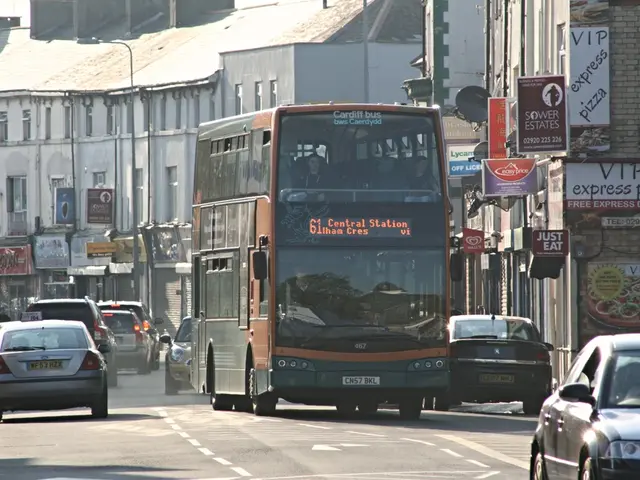Guidelines and Laws for Drones and Unmanned Aerial Vehicles (UAVs)
In the rapidly evolving world of drone technology, regulations have become increasingly important as the use of Unmanned Aerial Vehicles (UAV) expands across various fields.
Drones, initially developed for security and military purposes, have been in use for over a century. However, their applications have expanded significantly after 2000, with current uses including farming, photography, filming, search and rescue, and recreational use.
The classification of drones has become an issue due to the variety of types and sizes available. Some drones, like the piccolissimo, weigh as little as 2.5 grams and are 39mm, while others, such as the ehang216, can carry up to 260kg and are 5.61 meters in length and 1.76 meters in height.
As drone technology advances, future updates and new regulations regarding drone classification are expected. In some countries, specific UAV-pilot certificates are required to operate certain drones.
One of the key commonalities across countries is drone registration. Mandatory drone registration is a standard practice worldwide, with many countries, such as the United States and the European Union, having established online drone registration systems to track drone usage and registered pilots.
Pilot licensing or certification is another common requirement, particularly for commercial operations. For instance, Saudi Arabia enforces some of the strictest drone laws worldwide, with only residents holding a national ID able to register drones and obtain licenses. In the United States, drone pilots must register their drones if they weigh over 250 grams, and commercial operators require FAA certification under Part 107.
Operational limits, such as altitude caps and restrictions on flights near crowds, airports, and sensitive areas, are also standard practices. In the United States, drones cannot fly above 400 feet except with specific authorization, and BVLOS flights require FAA-issued permits and adherence to integrated Unmanned Traffic Management (UTM) systems.
In the European Union, urban drone flights follow U-Space protocols, a set of services allowing safe aerial traffic management. Compliance with GDPR for privacy and data protection is mandatory.
The future of aviation may be significantly impacted by drone technology, but efforts are being made to minimize negative effects. For example, the increasing use of technologies like Remote ID, detect-and-avoid, and integration with automated traffic management are shaping pilot qualifications.
However, there are no specific counter actions against evil-minded drone pilots mentioned. As the use of drones continues to grow, it is essential to address this aspect to ensure safe and responsible drone operations.
Summary Table:
| Country/Region | Drone Registration | Pilot Licensing/Qualification | Key Operational Rules | Notes | |--------------------|--------------------|-----------------------------------------|-----------------------------------------|-----------------------------------------| | Saudi Arabia | Residents only | Mandatory licensing for all pilots | Restricted areas, strict security focus | Visitors typically cannot get licenses | | United States (FAA)| Mandatory for >250g | Part 107 for commercial; new BVLOS permits | 400 ft altitude limit; UTM integration | Standardized BVLOS rule effective 2025 | | European Union (EASA)| Mandatory | Pilot credentials required; U-Space | 400 ft altitude; harmonized privacy laws| Cross-border harmonization; large drone certification |
This overview shows that while regulations differ in strictness and focus, the trend worldwide in 2025 is toward tighter safety and security rules, increased pilot responsibilities, and growing integration of drones into controlled airspace through technology-enhanced systems. Examples of online drone registration systems can be found in the UK and Turkey. The increasing affordability of drones has led to a rapid increase in their use in civil environments.
The progression of drone technology has diversified its applications in industries beyond security and military purposes, including finance, aerospace, and technology. For instance, drones are being used in agriculture for crop monitoring and in technology for surveillance and data collection.
In an effort to ensure safe and responsible drone operations, future regulations may require specific certifications or licenses for commercial pilots, similar to those implemented in countries like Saudi Arabia and the United States. Additionally, these regulations may encompass technology enhancements such as Remote ID, detect-and-avoid, and integration with automated traffic management systems.








